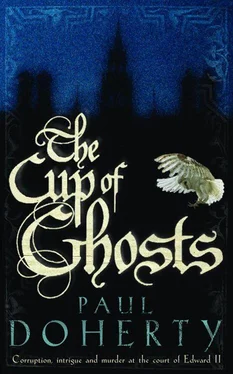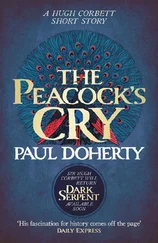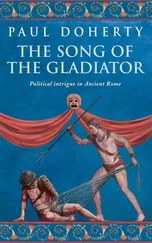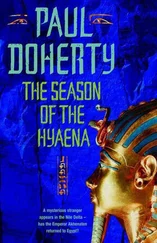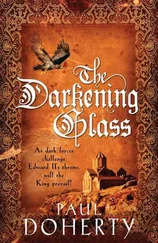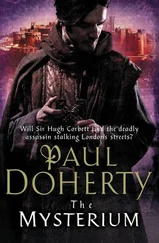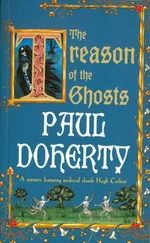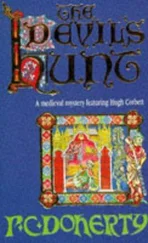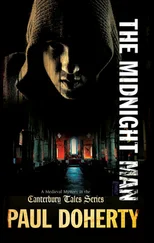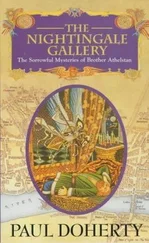Paul Doherty - The Cup of Ghosts
Здесь есть возможность читать онлайн «Paul Doherty - The Cup of Ghosts» весь текст электронной книги совершенно бесплатно (целиком полную версию без сокращений). В некоторых случаях можно слушать аудио, скачать через торрент в формате fb2 и присутствует краткое содержание. Год выпуска: 0101, Жанр: Исторический детектив, на английском языке. Описание произведения, (предисловие) а так же отзывы посетителей доступны на портале библиотеки ЛибКат.
- Название:The Cup of Ghosts
- Автор:
- Жанр:
- Год:0101
- ISBN:нет данных
- Рейтинг книги:5 / 5. Голосов: 1
-
Избранное:Добавить в избранное
- Отзывы:
-
Ваша оценка:
- 100
- 1
- 2
- 3
- 4
- 5
The Cup of Ghosts: краткое содержание, описание и аннотация
Предлагаем к чтению аннотацию, описание, краткое содержание или предисловие (зависит от того, что написал сам автор книги «The Cup of Ghosts»). Если вы не нашли необходимую информацию о книге — напишите в комментариях, мы постараемся отыскать её.
The Cup of Ghosts — читать онлайн бесплатно полную книгу (весь текст) целиком
Ниже представлен текст книги, разбитый по страницам. Система сохранения места последней прочитанной страницы, позволяет с удобством читать онлайн бесплатно книгу «The Cup of Ghosts», без необходимости каждый раз заново искать на чём Вы остановились. Поставьте закладку, и сможете в любой момент перейти на страницу, на которой закончили чтение.
Интервал:
Закладка:
We journeyed into Cheapside, where the Great Conduit, a spacious building which covered the main watering place of London, had been transformed into a fairy castle, housing maidens dressed in cloth of gold, their hair studded with gems. These sang beautifully, ‘Gloriosa Dicta Sunt, Isabella’ — Glorious Things Are Said About You, Isabella. And, so it continued as we processed along that great thoroughfare of Cheapside, its magnificent mansions and shops ranging on either side. We went down under the lofty towers and steeple of St Paul’s, along the roads bordering the Thames, on to the Royal Way and into the spacious precincts of Westminster. On one side rose the halls and soaring gabled houses of the palace; on the other the glorious, breathtaking vision of stone which was Westminster Abbey, its flamboyant stonework, buttresses, walls, glass-filled windows, lace-work carvings and triumphant gateways sparkling in the heavy frost. We entered, processing along its spectacular nave up to the high altar, and Isabella and Edward knelt in the sanctuary to give thanks before visiting the canopied marble shrine of Edward the Confessor.
Afterwards, we journeyed up river to the Tower. We left the King’s Steps at Westminster on a magnificent, elaborately decorated royal barge, its boatmen bending over the oars while Edward and Isabella, enthroned under a canopy of cloth of gold, greeted the crowds lining the north bank of the Thames. We passed the famous quaysides of Queenshithe, Dowgate and the rest, and for the first time I experienced the terrors of shooting the waters between the starlings on the arches of London Bridge. A truly awesome experience of thundering, surging water booming like the drums of hell, spray flying like rain, before coming slowly in to moor at the Tower quayside, where Sandewic and Baquelle, dressed in the glowing colours of the royal household, were waiting to greet us.
I shall never forget my first arrival at the Tower, that grim brooding yet in some ways elegant fortress which was to play such a vital role in my mistress’s life. Henry III had copied the best of France in the building and renovation of the abbey and palace, but the Tower was a formidable reminder of the old king’s warrior ways. No wonder Sandewic was devoted to it. A soldier’s place, built for war, its very size and strength sufficient to threaten and subdue the turbulent Londoners, it reared up above the river with its central donjon or keep and girdling walls, deep moats, formidable bastions, dominating towers, cavernous gateways, all defended by crenellations, arrow slits, narrow gulleys and iron-tipped porticullis. We journeyed under the Lion Gate on to the bridge spanning the green-slimed, reeking moat, past the barbican where the King’s animals, lions, leopards and other fearsome beasts, prowled and roared. We stopped and listened to these before proceeding on through Middle Tower, under Byward and into the outer bailey, a broad, open expanse stretching between two curtain walls which housed the stables, store houses and living quarters of the soldiers and servants.
We continued on under St Edmunds Tower, through another gateway and into an enclosed courtyard cordoned off by the great four-squared keep as well as the Wakefield and Lanternhorn towers. Royal mansions had been built to connect these towers, magnificent houses of white and pink plaster and jet-black beams on stone foundations with red-tiled roofs. Large glass-filled windows provided both light and air whilst the inside floors were of polished wood. The walls of all the chambers were painted with ashlar, imitation stone, and decorated with eye-catching friezes of animals, plants, flowers, angels, griffins and a whole range of heraldic devices. One of these mansions, which Sandewic called his Castle on the Hoop, was given over to Isabella. An elegant residence, the castle boasted private bedchambers with hangings, chests and counters. On the ground floor was a small hall, exquisitely decorated and hung with vivid tapestries, a polished oaken table ranged along the dais, with trestle boards below for the servants. All the rooms were warmed with braziers whilst fires roared in the ornamental mantled hearths. Each was well furnished with a lavarium, consisting of wash bowls, jugs and pegs for napkins, silver candelabra as well as candle-wheels which could be lowered by pulleys to provide more light. Off the hall were parlours, butteries and kitchens all equipped with every necessity and comfort.
Sandewic was so proud of it all, God rest and assoil his poor soul. He wanted to make us feel safe, secure and comfortable. My heart warmed to his gentle goodness. For a brief while I cried, going off by myself to a deserted parlour because the constable’s cordial welcome evoked memories of Uncle Reginald and the warm closeness which he had wrapped around me. Isabella also welcomed the Castle, after the rigours of the royal progress. She doffed her gowns and jewellery, running around the chambers laughing and clapping her hands like the joyous young woman she should have been. It was good to be alone. The king and Gaveston lodged in the nearby Wakefield Tower whilst, God be thanked, the French had stayed at the king’s palace of Westminster. Casales and Rossaleti had been given chambers in our mansion whilst Baquelle, full of the glories the Londoners had staged, returned to the great Guildhall in Catte Street to feast and boast with his fellow aldermen.
That February became a time of waiting as preparations were made for the coronation. Isabella had described us as two sparrows. On reflection we were more like sparrowhawks, still young and tender, whilst the Tower became our safe nesting place. Sandewic, of course, came into his own. He loved his fief, so every morning he would present himself at the Castle on the Hoop with a list of minor ailments which made me smile. I treated blisters with madonna’s lily; cat-nip or neo, soaked and roasted, for the rheums and his constant catarrh. He, in turn, was eager to show me the Tower in all its glory. We visited the barbican. Inside stood a long row of specially built cages which contained the savage beasts, gifts for the English king from foreign rulers. One, in particular, fascinated Sandewic: a huge brown bear he called Woden, a fearsome brute who’d rear up, clawing the air. The stench was intense, fetid and foul from the large vats swimming in blood containing the slabs of meat fed to the beasts. Sandewic was particularly pleased with the cages. He had personally supervised their construction so the animals could pace and move. He pointed out how Woden, like himself, suffered pains in the joints. He certainly had a kinship for that great beast, even carrying a basket of fruit into Woden’s cage. On such occasions he’d dress in a special cloak fashioned out of boiled leather sheets sewn together; this served as protection against the half-tame bear: Woden would lumber towards him and gently pull at the constable, begging for the food Sandewic eventually placed on the ground.
The constable’s great boast, however, was the little Chapel of St Peter ad Vincula situated in a corner of the inner bailey. It had fallen into disrepair and Sandewic had refurbished it out of his own revenues. He was very proud of what he called his petit bijou — his little jewel. Inside, the chapel was similar to those built before the Conqueror: a long, barn-like building with beams spanning the narrow nave leading down to a gleaming stone sanctuary with its elaborately carved rood screen and large table-altar standing on a dais. Above this, a spacious oriel window filled with stained glass depicting the liberation of St Peter from his prison in Jerusalem poured in light. The paving stones were smooth and evenly laid, the woodwork gleamed a warm dark brown. Charcoal braziers provided warmth, and to the left of the sanctuary the masons and carpenters had fashioned a small lady chapel with a carving of the Virgin and Child which replicated the famous image at Walsingham. Tablets of incense placed on top on the brazier provided a fragrant perfume whilst the chapel even boasted small benches and prie-dieus. The walls had been sanded, replastered, whitewashed and almost covered by vigorous, vivid paintings describing the history of the Tower.
Читать дальшеИнтервал:
Закладка:
Похожие книги на «The Cup of Ghosts»
Представляем Вашему вниманию похожие книги на «The Cup of Ghosts» списком для выбора. Мы отобрали схожую по названию и смыслу литературу в надежде предоставить читателям больше вариантов отыскать новые, интересные, ещё непрочитанные произведения.
Обсуждение, отзывы о книге «The Cup of Ghosts» и просто собственные мнения читателей. Оставьте ваши комментарии, напишите, что Вы думаете о произведении, его смысле или главных героях. Укажите что конкретно понравилось, а что нет, и почему Вы так считаете.
